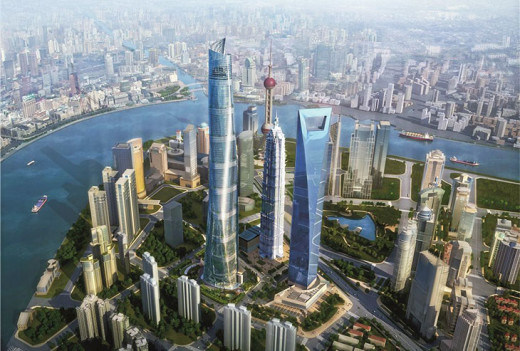
When we think of design, we often associate it with commercial endeavors: a company logo, a product, a website, or even a building’s layout, both inside and out.
Design possesses a power beyond the commercial importance we’ve placed on it. As creatives, we’re taught (or learned along the way) to think of design as a way to solve problems and convey important, meaningful concepts to broad audiences.
Design in its own right can solve problems and bring about forces of change, revolution, enlightenment and renaissance. As the practice and conscientious thinking of design progresses through history, this way of thinking – design thinking – is having an influence on industries well beyond “creative” professions.
Problem-solving is becoming more rooted in design principles of empathy for the consumer, driving change that is making a host of industries more human-focused and people-centered than at any other time.
Joel Towers, Executive Dean at The New School’s Parsons School of Design, shares insight on how designers are looking more globally at the major issues that impact us as people, communities, and consumers, and how design can help us not only understand these issues better, but give us the opportunity to bring about real change and solutions through the use of human-centered design.
Activating the power of design-thinking to drive change for a better tomorrow is precisely one of the key principles adopted by Parsons School of Design’s Global Executive Master of Science in Strategic Design and Management program, based at the school’s Paris campus and offering intensives in urban centers such as New York and Shanghai.
Leveraging design’s power to generate innovative solutions that effect real transformation is one of the school’s ultimate goals. As Parsons and its students well know, there are many historic examples – and many more on the horizon – of how an intelligent, design-led approach to problem solving can impact the world around us in the most positive ways.
From climate change to housing solutions to an aging population, this forward-thinking program gives students the opportunity to learn from individual cities and what its inhabitants need, and how that can be solved from a design perspective.
The birth of socially engaged design
Parsons has long regarded its artists and designers as actively engaged citizens. “Materially the American is better off because of his great industrial society. But what is happening to him spiritually?” Parsons president Pierre Bedard wrote in 1954. “This School is conscious of its great responsibility in forming characters and minds of those who will help shape our civilization.”
Political upheaval and new social history in the late 1960s would challenge several Parsons programs, especially Interior Design. Before, the curriculum had emphasized middle-class and upscale homes. After the upheaval, the program redirected students to work on more socially conscious projects, such as prisons, hospitals, and public housing.
In keeping with this new direction, Interior Design graduates from the class of 1965 mounted ‘A Place to Live’, an exhibition that proposed alternatives to substandard urban housing. Since this formative era, every Parsons program has emphatically championed art and design as both intellectual practice and social responsibility.
The need to address climate change
Today, we have the tools, research, and science available to model our design decisions more intricately than ever, limiting the instances in which the solution to one problem creates new problems somewhere else. When we analyze whole systems and understand interconnections, we can minimize the negative effects of the things we create while solving the problems that impact us as citizens.
When you think about it, climate change is a manifestation of unintended consequences of past designs. Successfully addressing climate change requires a holistic view. This is something that the Tishman Environment and Design Center at The New School’s Parsons School of Design works to instill in their students.

This design thinking approach to the Shanghai Tower resulted in a 35 percent reduction in materials used and $58 million in construction cost savings. Not only were savings benefited during the building of the tower, the tower also benefits from an ongoing energy savings of 20 percent and water savings of 40 percent. This is the future of buildings and infrastructure– modeling and optimizing the full impact of a building and capitalizing on significant savings as a result.
The need to help the aging population
As city populations start to age and the elderly are living longer and fuller lives than their parents or grandparents did, there’s a need to solve the housing and medical requirements of this aging population while still ensuring their quality of life and health care are met.
In Paris, where the Global Executive Master in Strategic Design and Management is based, the studio Naud and Poux observed that the city’s elderly population was not being cared for well in traditional facilities. Using their design backgrounds, they worked to solve for housing that could meet the unique health needs through the application of design thinking principles.

Other features included a hinged shutter that allows for shade or privacy so that residents have more control over their environment, a novelty among other, more traditional building layouts.
Approaching design with the unique interests of the “user” in mind, Naud and Poux was better able to build a complex best suited to the target population’s health and life requirements in ways other facilities couldn’t offer.
Conclusion
Design thinking and design-led approaches to solving the needs and problems that a city, company, community or society in whole is the main driving force behind the curriculum espoused by the Global Executive Master of Science in Strategic Design and Management at The New School’s Parsons School of Design.
This program aims to enlighten and empower students to search for and find new ways to solve the most pressing issues of their environment, whether in their their backyard or abroad.
Using design and design thinking to take on the challenges of cities and communities all tie into the principles and mission of the The New School’s Parsons School of Design.
Get the TNW newsletter
Get the most important tech news in your inbox each week.





